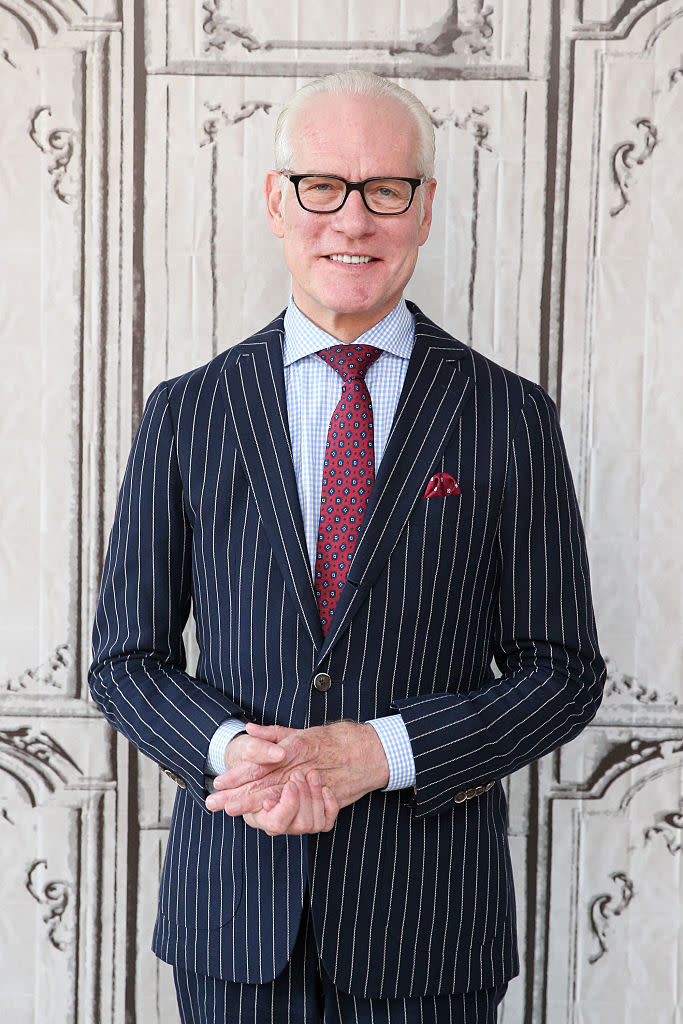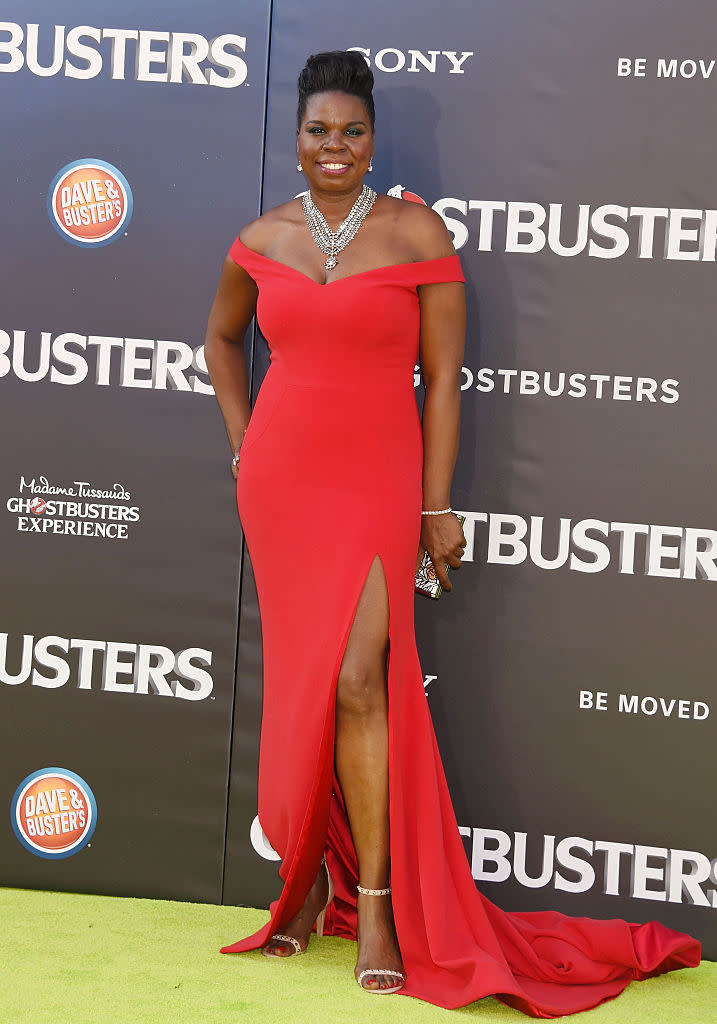Tim Gunn Says Fashion Has a Plus-Size Problem

Tim Gunn has a challenge for American fashion designers: Stop marginalizing women size 14 and higher, and start dressing them to look just as great as their size 4 counterparts. And, while you’re at it, stop calling them “plus-size.”
In a video that aired on the PBS NewsHour, the Project Runway guru gives one of the best-articulated arguments to date for more and better garments for women who wear double digits. Instead of simply bemoaning the lack of options for larger women, he expertly explains how designers can — and why they should — start expanding their repertoire to include women of all sizes.
Plus is the majority
“Would it surprise you to know that the average American woman now wears between a size 16 and a size 18?” Gunn asks viewers, pointing out that this accounts for more than 80 million U.S. consumers. “And for the past three years, they have increased their spending on clothes faster than their straight-size counterparts.”
Despite the fact that plus-size women (sorry, Tim) make up the majority in the U.S., they are treated by the fashion industry as an insignificant minority. “[Designers] pretend that they don’t even exist,” Gunn says. That goes for larger celebrities too. The beloved designer points to actress Leslie Jones’s need to resort to Twitter to find someone to dress her for the premiere of her film Ghostbusters. “How does that happen?” Gunn asks in the video. (Fun fact: Project Runway alum Christian Siriano — now a respected designer — stepped up to the plate and made the stunning red gown Jones wore to the event.)

Frankly, Gunn is confused. And it’s because — despite the fact that others in the industry have declared that “the plus-size woman is complicated, different and difficult, and that no two size 16s are alike,” he knows that isn’t entirely true. “I’m not trivializing the task. It’s challenging,” he concedes. But, ultimately, he feels, it’s about inclusivity and breaking out of the rigid mentality that it’s not possible to make larger women look as fabulous as smaller women. That’s a falsehood that’s been pounded into our collective consciousness but can be overcome by taking a more mindful and artful approach to design. He also believes it’s an ego issue. “It’s a given that [many designers] don’t want their precious brands tarnished by the likes of a size 16,” he says.
Gunn then schools viewers on the genesis of the plus-size problem that he and millions of women have identified. It’s intrinsic to the fashion industry itself. “The fashion industry works from standards established decades ago. Habits are hard to break,” he points out. “From the runway to magazines, pictures of how clothes are supposed to look, how women are supposed to look, are set. And it all revolves around thinness,” he says, pointing out what we all know but somehow can’t completely internalize: Models sent down fashion runways have “completely unattainable” bodies. (Read: exceedingly thin forms that are not representative of the typical woman.)
So what’s the solution? “Designs need to be reconceived, not just sized up,” Gunn says, then repeats a formula he’s laid out in the past: “It’s the harmonious balance of silhouette, proportion, and fit,” he says. “Done right, our clothing can create an optical illusion that helps us look taller and slimmer. But done wrong, we look worse than if we were, well, naked.” He urges designers to step up to the plate. “There is no reason why larger women can’t look just as fabulous as all other women. It’s a design issue and not a customer issue.”
Take it to retail
To that end, Gunn is baffled as to why clothing retailers are not demanding that designers provide more options for their primary consumer. Retailers have plenty of leverage, he points out, setting up this theoretical scenario: “Marc Jacobs, if you want to continue to own the current space that you have in our store, then we also need clothing for our larger market.”

This isn’t the first time Gunn has been vocal about his disdain for the fashion industry’s exclusion of larger women. In September, during New York Fashion Week, he penned an impassioned essay for the Washington Post about the topic. He pointed out that during last year’s Fashion Week, some designers — including Marc Jacobs, incidentally, and Sophie Theallet — did send plus-size models down the runway. “But these moves were very much the exception, not the rule,” he wrote.
“I love the American fashion industry, but it has a lot of problems, and one of them is the baffling way it has turned its back on plus-size women. It’s a puzzling conundrum.” Gunn called shopping for plus-size clothing in U.S. retail stores “a horribly insulting and demoralizing experience,” pointing out that one mainstream department store classifies all its size-12-and-above garments as “WOMAN,” using a prominent sign. “What does that even imply? That a woman is anyone larger than a 12 and everyone else is a girl? It’s mind-boggling,” he wrote.
In the essay, Gunn professed that “there’s an art” to dressing women who do not have the straight figures of most runway models. He offered specifics. “Separates — tops, bottoms — rather than single items like dresses or jumpsuits always work best for the purpose of fit. Larger women look great in clothes skimming the body, rather than hugging or cascading.”
Make it work
In short, if Tim Gunn says there’s a way, there’s a way. Now the onus is on designers to ditch the long held attitude that fashion is just for skinny women. As Gunn says, “Fourteen-plus is now the shape of women in this nation, and designers need to wrap their creative minds around that.” Designers: Make it work.
Follow us on Instagram, Facebook, and Pinterest for nonstop inspiration delivered fresh to your feed, every day.
